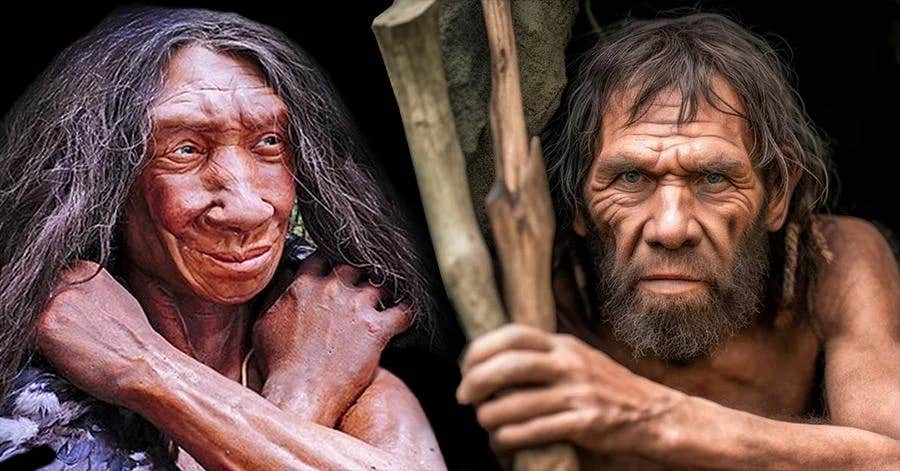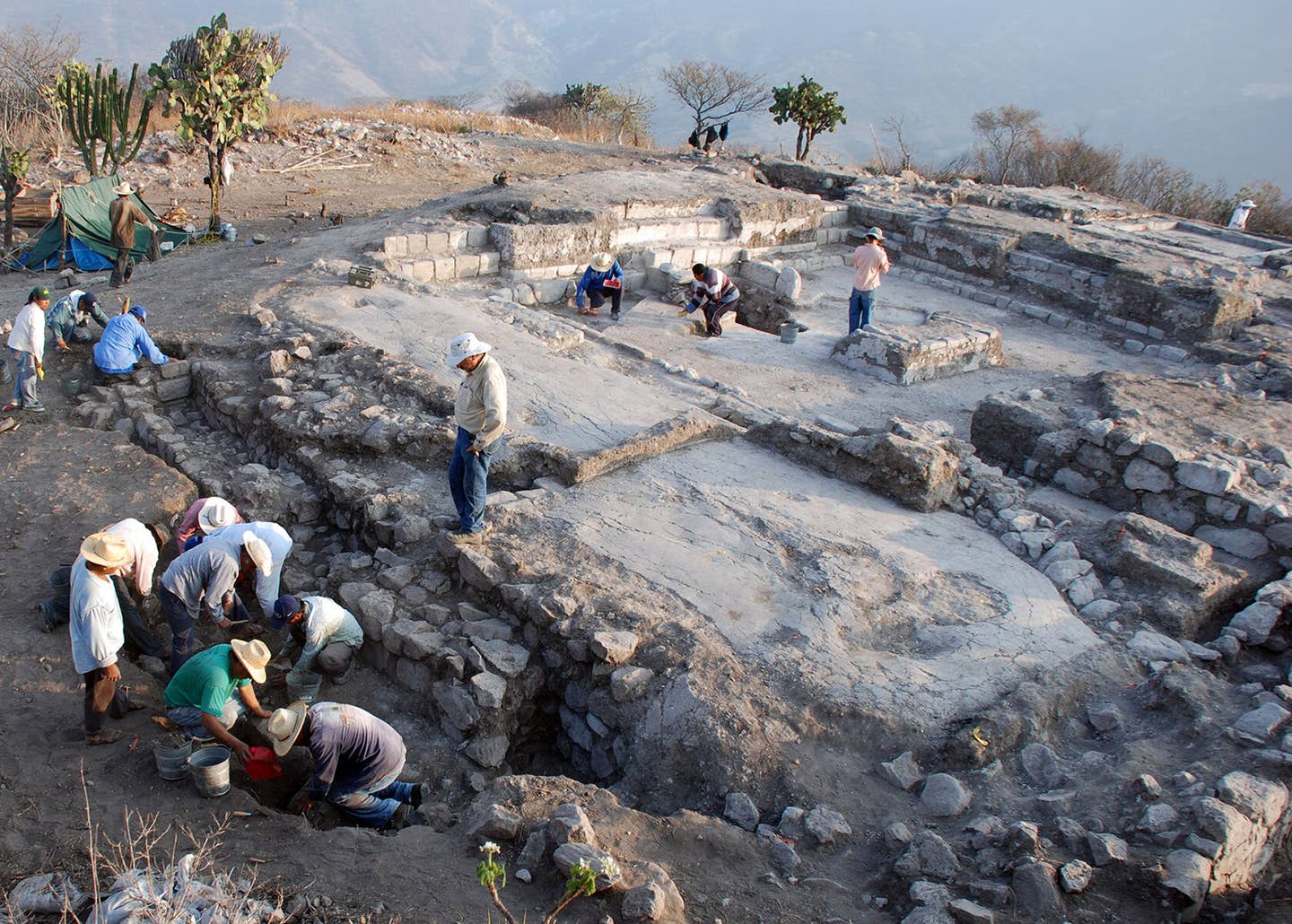Neanderthals and modern humans interbred 50,000 years ago
Neanderthal genes influenced modern human evolution, immunity, and migration patterns, with insights from ancient and modern genomes.

Neanderthal genes shaped human evolution, offering insights into migration, adaptation, and genetic legacy. (CREDIT: Wikimedia Commons/Adobe Stock)
New research reveals that gene flow from Neanderthals has left a lasting imprint on modern human genomes. Non-African populations today inherit approximately 1% to 2% of their genetic material from Neanderthals. However, the complex evolutionary processes that shaped this inheritance remain a topic of active investigation.
To explore this phenomenon, scientists examined genomic data from 59 ancient individuals spanning 45,000 to 2,200 years ago and 275 present-day humans. By analyzing the frequency, length, and distribution of Neanderthal ancestry segments, the team aimed to answer key questions about the timing, duration, and functional legacy of this gene flow.
The study determined that Neanderthals and modern humans interbred approximately 50,500 years ago, a process that lasted around 7,000 years.
This timeline aligns with archaeological evidence suggesting that the two groups coexisted in Eurasia for about 6,000 to 7,000 years before Neanderthals disappeared. This prolonged interaction resulted in interbreeding that profoundly influenced the genomes of modern humans in Eurasia.
“The timing is really important because it has direct implications on our understanding of the timing of the out-of-Africa migration,” said Priya Moorjani, an assistant professor of molecular and cell biology at the University of California, Berkeley. She emphasized that understanding the timing helps clarify the settlement patterns outside Africa.
The precise estimate of the interbreeding period is supported by extensive genome analysis. Researchers compared the DNA of ancient Homo sapiens with contemporary humans, creating a detailed catalog of Neanderthal ancestry segments.
Previous estimates for the interbreeding period ranged widely, from 54,000 to 41,000 years ago. This study narrowed it to around 47,000 years ago, providing a clearer picture of when modern humans began their migration into Eurasia.
Benjamin Peter, a researcher involved in the study, explained that the gene flow was complex. “We show that the period of mixing was quite complex and may have taken a long time. Different groups could have separated during the 6,000- to 7,000-year period and some groups may have continued mixing for a longer period of time,” he said.
Another significant finding involves regions of the modern human genome either enriched or devoid of Neanderthal DNA. Regions lacking Neanderthal genes, termed “deserts,” emerged rapidly after interbreeding.
These areas likely contain Neanderthal gene variants that proved detrimental to modern humans. Early samples from individuals over 40,000 years old already display these deserts, suggesting rapid evolutionary changes.
Related Stories
“Very early modern humans from 40,000 years ago don’t have any ancestry in the deserts, so these deserts may have formed very rapidly after the gene flow,” said Leonardo Iasi, a lead researcher. He noted that some high-frequency Neanderthal genes relate to immunity, skin pigmentation, and metabolism—traits advantageous for survival in Ice Age climates.
Notably, some inherited Neanderthal genes remain relevant today. For example, a gene conferring protection against coronaviruses—such as the virus causing COVID-19—is among the variants passed down. While some genes became immediately advantageous, others gained importance as environmental conditions changed.
“The environment changes, and then some genes become beneficial,” Peter explained. This adaptability highlights the ongoing influence of Neanderthal ancestry on modern human evolution.
The study also revealed regional variations in Neanderthal gene prevalence. East Asians, for instance, possess approximately 20% more Neanderthal DNA than Europeans and West Asians. This disparity may result from extended periods of interbreeding as modern humans migrated eastward.
Moorjani emphasized the broader implications of these findings. “It’s really cool that we can actually peer into the past and see how variants inherited from our evolutionary cousins, Neanderthals and Denisovans, changed over time,” she said. Such insights shed light on the dynamics of human evolution and adaptation.
This research also examined functional regions of the genome. Many high-frequency Neanderthal genes affect immunity, aiding in the defense against pathogens. Additionally, genes influencing skin pigmentation helped humans adapt to varying UV radiation levels as they spread across diverse climates.
“The fact that we find some of these regions already in 30,000-year-old samples shows that some of these regions were actually adapted immediately after the introgression,” said Manjusha Chintalapati, another researcher. This suggests that certain Neanderthal genes rapidly conferred survival advantages to modern humans.
Despite the benefits, not all Neanderthal genes proved advantageous. Lethal variants were quickly purged, leading to the emergence of genetic deserts. This rapid elimination underscores the interplay between natural selection and interbreeding.
The findings also challenge earlier assumptions about the timing of human migration out of Africa. Researchers concluded that the initial migration into Eurasia was largely complete by 43,500 years ago, setting the stage for interactions with Neanderthals.
These discoveries build on previous studies, offering a more detailed understanding of human evolutionary history. By analyzing ancient and modern genomes together, the research provides a comprehensive view of how Neanderthal ancestry influenced the genetic landscape of Homo sapiens.
“One of the main findings is the precise estimate of the timing of Neanderthal admixture,” Chintalapati said. “This allowed us to build a more complete picture of the past.” The collaboration between institutions such as UC Berkeley and the Max Planck Institute highlights the value of interdisciplinary efforts in unraveling evolutionary mysteries.
This research not only illuminates the past but also raises new questions. For instance, why do certain Neanderthal genes persist while others vanish?
As scientists continue to explore these questions, they reveal the intricate web of genetic and environmental factors shaping human evolution.
Note: Materials provided above by The Brighter Side of News. Content may be edited for style and length.
Like these kind of feel good stories? Get The Brighter Side of News' newsletter.
Joshua Shavit
Science & Technology Writer | AI and Robotics Reporter
Joshua Shavit is a Los Angeles-based science and technology writer with a passion for exploring the breakthroughs shaping the future. As a contributor to The Brighter Side of News, he focuses on positive and transformative advancements in AI, technology, physics, engineering, robotics and space science. Joshua is currently working towards a Bachelor of Science in Business Administration at the University of California, Berkeley. He combines his academic background with a talent for storytelling, making complex scientific discoveries engaging and accessible. His work highlights the innovators behind the ideas, bringing readers closer to the people driving progress.



